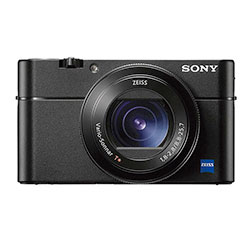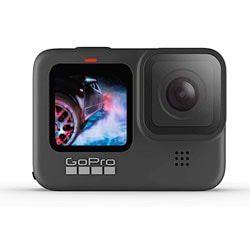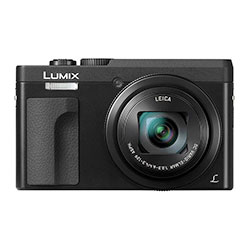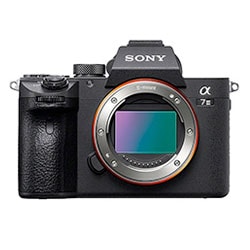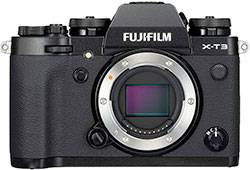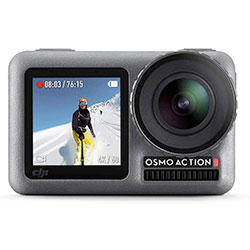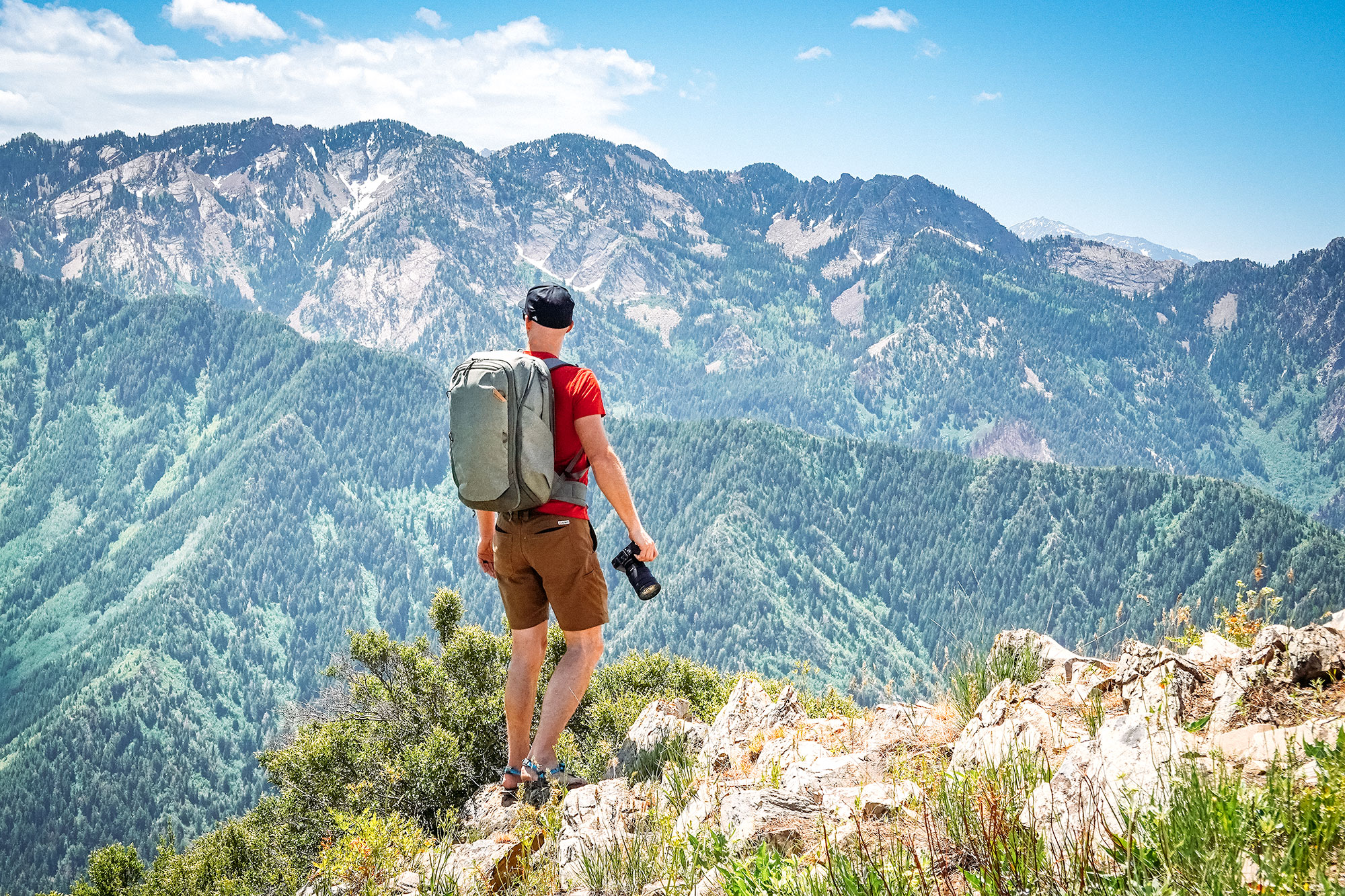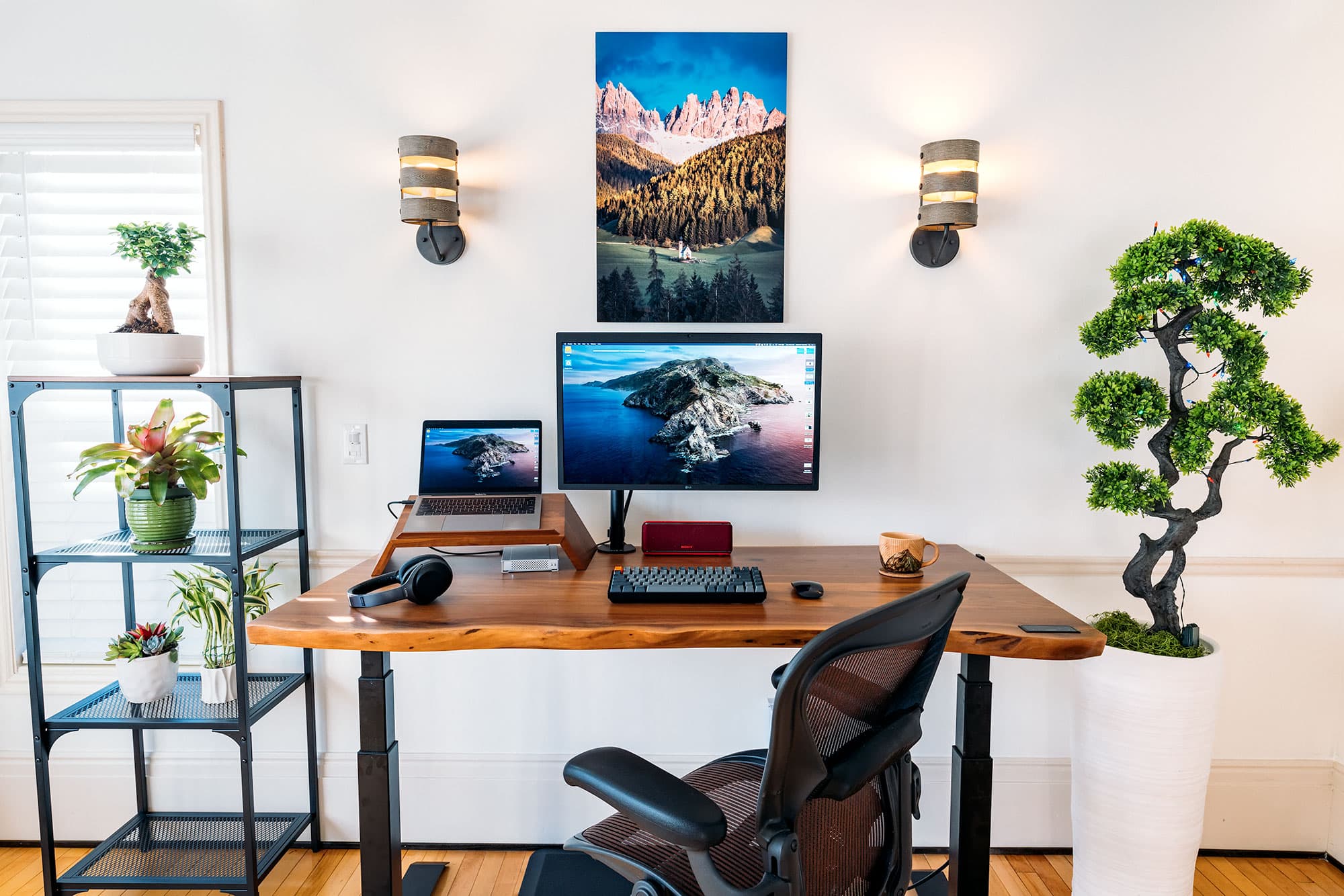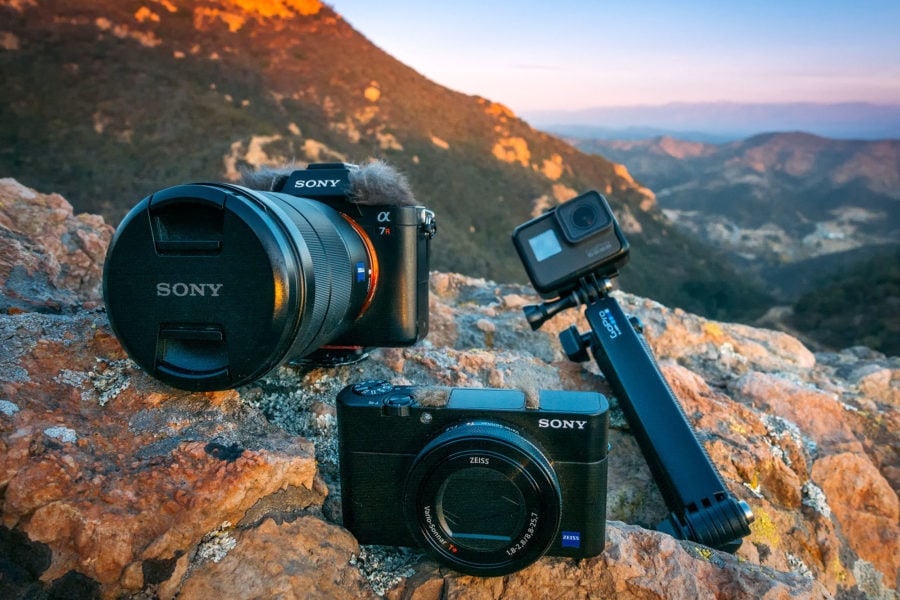
Travel Photography Gear
As a professional travel photographer, I get a lot of questions about what's the best travel camera. There are so many to choose from! Here's what I would pick, and why.
If you're into travel photography, exploring the world with a good travel camera can help you bring back vacation images that will stand the test of time.
Epic travel memories & experiences to share with family and friends for years to come. Travel photos are some of my most treasured souvenirs!
But what's the best travel camera for capturing these special moments?
There's no easy answer to this question. Different people will have different requirements and budgets for choosing a travel camera.
My goal with this digital camera buyers guide is to help you narrow down the overwhelming choices -- and pick the perfect camera for travel so you're prepared for your next trip.
Here’s everything we’re going to cover (click on a specific section if you want to skip around).
- Ultimate Travel Camera Buyers Guide
- Quick Answer: Best Travel Cameras Of 2025
- Important Travel Camera Features
- Understanding Camera Sensors
- Best Compact Cameras For Travel Photography
- Best Mirrorless Travel Cameras
- Best Action Cameras For Travel
- Smartphones For Travel Photography
- How To Improve Your Travel Photography
- FAQ: Top Travel Camera Questions
Ultimate Travel Camera Buyers Guide
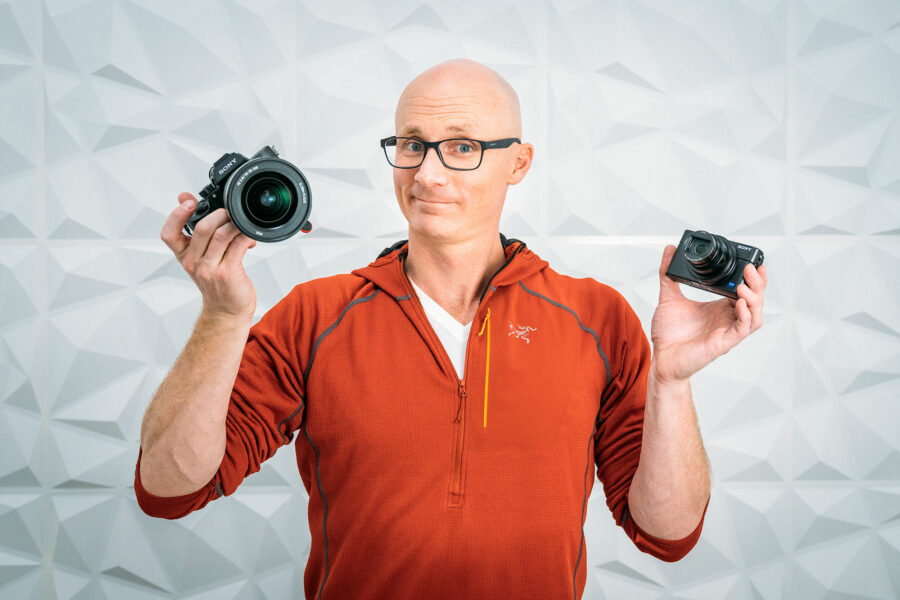
Quick Answer: Best Travel Cameras Of 2025
Camera
Description
Price
Best Compact Travel Camera
Sony RX100 VII
- FEATURES: Small point & shoot camera, 1" sensor, professional settings, 4K video, lightweight, beginner friendly.
- WEIGHT: 10.6 oz
- MEGAPIXELS: 20
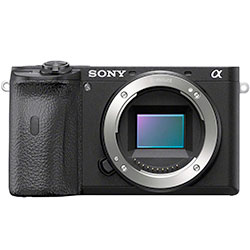
Best VALUE Travel Camera
Sony A6600
- FEATURES: Professional settings, large APS-C sensor, 4K video, interchangeable lenses, and flip screen.
- WEIGHT: 17.7 oz
- MEGAPIXELS: 24
Best action Travel Camera
GoPro Hero 9
- FEATURES: Two screens. 5K video, voice activated.
- WEIGHT: 5.57 oz
- MEGAPIXELS: 20
Best budget Travel Camera
Panasonic Lumix ZS70
- FEATURES: Small point & shoot camera, 1" sensor, lightweight, and under $400.
- WEIGHT: 11.7 oz
- MEGAPIXELS: 20
Best mirrorless Travel Camera
Sony A7 III
- FEATURES: Professional settings, full frame sensor, great low light ability, 4K video, interchangeable lenses, and weather sealed.
- WEIGHT: 22.9 oz
- MEGAPIXELS: 24
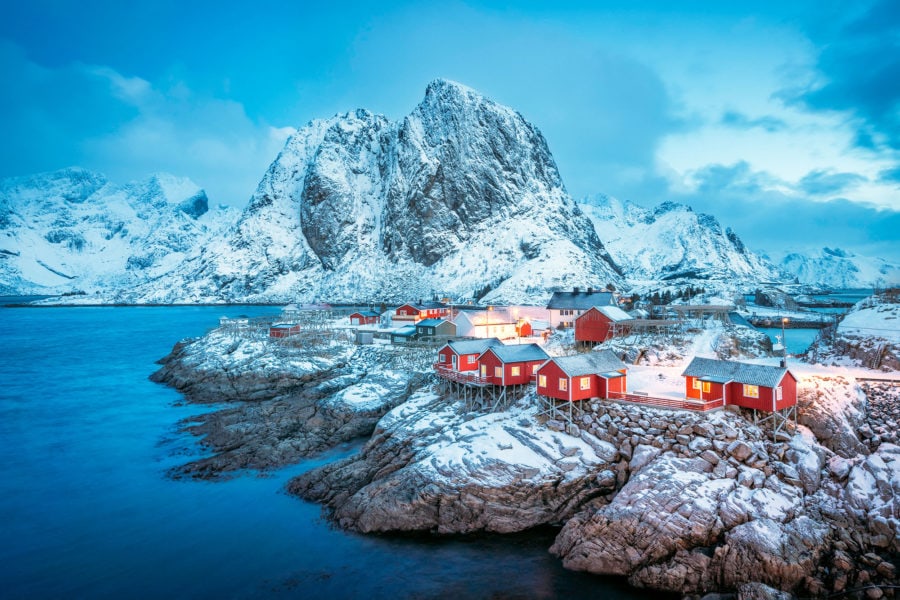
Important Travel Camera Features
We’ll get to the juicy stuff in a second (I promise!), but first, it’s important to understand what makes a camera good for travel.
When picking a travel camera, you must define what your needs are.
Are you looking for lightweight portability? Something weatherproof? Professional image quality? Reasonably priced? A well-rounded model for landscapes, portraits, but can also handle vlogging?
Here are some key camera features you should be aware of moving forward.
SIZE & WEIGHT - Gone are the days when a bigger camera means a better camera. If you want to travel with your camera, you'll want something small & lightweight. Luckily technology has improved a lot.
MANUAL SETTINGS - Professional photographers want the ability to manually control all camera settings to dial in the perfect shot in different situations. Pick a travel camera with full manual control if you want to improve your skills.
MEGAPIXELS - Many people assume that more megapixels is better. This isn't always true if the pixels themselves are small. However, more megapixels on a large sensor will give you higher detail, and allow you to "crop" your image without reducing quality.
APERTURE - Lens aperture is measured in f/numbers, like f/1.4, f/2.8, f/4, etc. The lower the number, the better it will perform in low-light situations (and more expensive). Lower numbers also create a nice "bokeh" effect in portraits.
ZOOM RANGE - A zoom lens lets you get closer to the action, especially for wildlife or people. But the bigger the zoom the bulkier a camera gets. The amount of zoom is a personal preference. For travel, having the option to zoom in without changing lenses is nice.
HD/4K VIDEO - Most quality travel cameras will shoot video in HD 1080p. Some even have 4K capabilities — which most people won't need unless you're doing professional work. Travel cameras that can shoot in 4K are generally more expensive.
WIFI/BLUETOOTH - Some cameras have their own wifi network, allowing you to upload your photos instantly to your computer or smartphone. This can be handy if you want to share travel photos to social media without a computer.
INTERCHANGEABLE LENSES - High-end mirrorless and DSLR cameras have interchangeable lenses, allowing you to pick the perfect lens for different situations. Smartphones and compact travel cameras usually have fixed lenses.
WEATHERPROOFING - Will your travel camera hold up against the elements? Some cameras are better protected from moisture and dust than others. If you plan on shooting in very dusty or wet environments, it helps to have strong weatherproofing.
RAW - Not all cameras shoot in RAW format. Camera RAW basically saves the image without any internal modifications, as opposed to JPG. It's preferred by advanced users for more leeway when editing their images with software later.
STABILIZATION - Some cameras or lenses offer Optical Image Stabilization (OIS). This feature compensates for "handshake" on slower shutter speeds, to help keep images sharp in low-light situations. Some cameras also have internal sensor stabilization, for even better results.
Understanding Camera Sensors
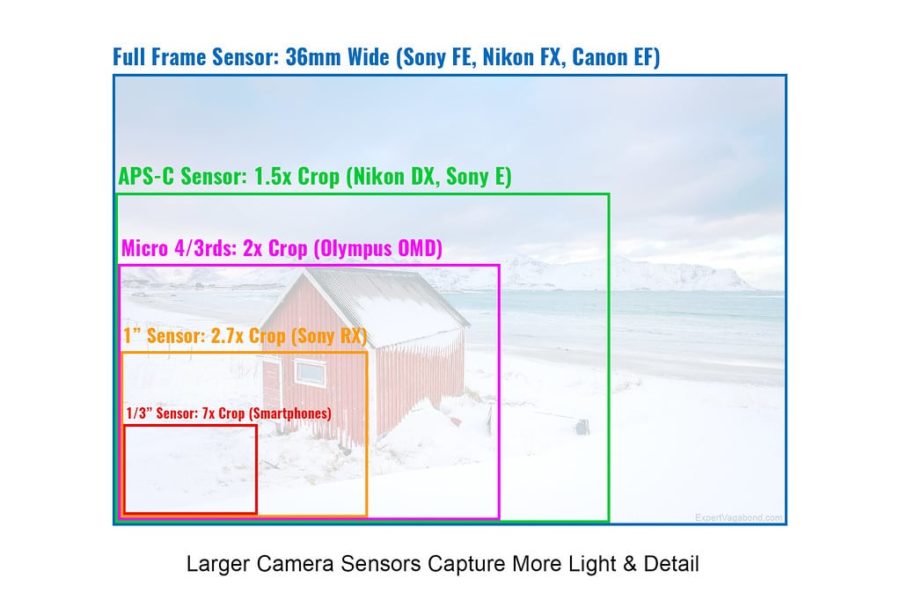
When choosing the perfect camera for traveling, you need to understand different camera sensors, and how they affect image quality and camera size.
In general, a camera with a large sensor is going to perform better in low light because that large sensor can capture more of it.
With a large sensor, you'll also get more detail, allowing you to print your images large, or crop them smaller, and not lose any quality.
However, a large camera sensor means the camera itself will be larger as well.
Best Compact Cameras For Travel Photography
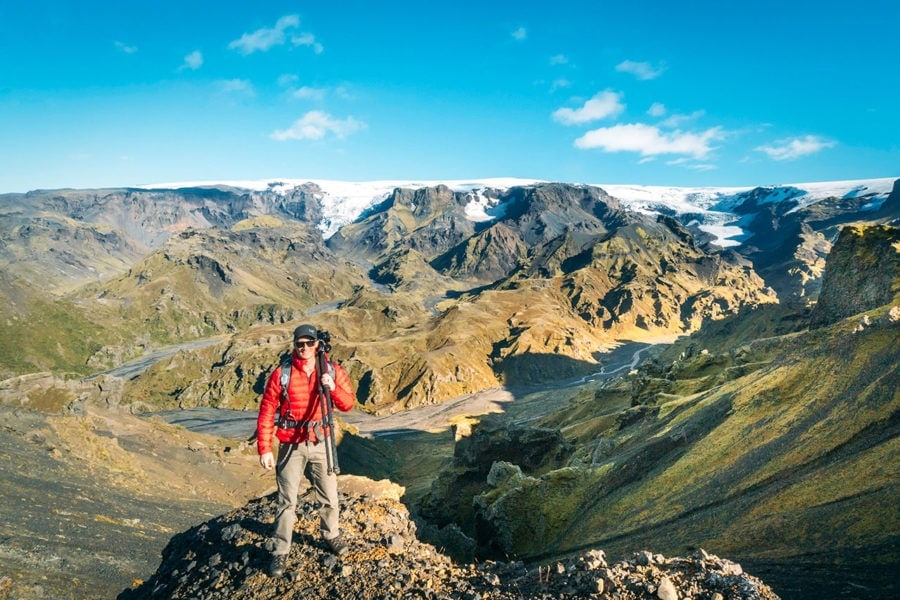
Compact cameras have come a long way. Improved technology means companies can pack these portable travel cameras with a ton of features.
Many shoot 4K video and have manual settings, just like the more expensive cameras on this list.
In my opinion as a professional photographer, a decent compact camera is the best option for 75% of amateur travel photographers.
They combine the perfect mix of being portable, powerful, and pretty budget-friendly too.
Here are my current top 5 picks for compact travel cameras that are perfect for shooting travel photography on your next vacation.
1. Sony RX100 VII - Best Compact Travel Camera
Weight: 10.6 oz
Zoom: 24-200mm
Sensor Size: 1″ (13.2 x 8.8 mm)
Megapixels: 20.1
Price: Click Here For Latest Price
The Sony RX100 VII is my favorite small travel camera. It's what I'd call a "professional" point & shoot. While it is compact enough to fit in my pocket, it has many of the same features as my larger primary mirrorless camera.
It's not the cheapest travel camera, but you can also pick up older models like the RX100 IV for a bit less. They also make reasonably priced underwater dive-housings for this line. It's a great one for travel blogging & Instagram photos!
Pros
- 4K Video
- Fast Focusing
- Flip-screen for Vlogging
- Built-In Flash
Cons
- Small Sensor
- Fixed Lens
- Weak Microphone
EDITOR'S NOTE: This is usually the travel camera I recommend for most people. If you want something nicer than a smartphone, but are intimidated by the size & weight of larger cameras, you’ll love the small Sony RX100.
OFFICIAL SUPPLIERS:
2. Canon G7X III - Travel Vlogging Camera
Weight: 11.25 oz
Zoom: 24-200mm
Sensor Size: 1″ (13.2 x 8.8 mm)
Megapixels: 20.1
Price: Click Here For Latest Price
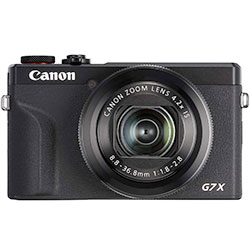
The Canon G7 X III is another fantastic compact point & shoot camera that's great for travel photography. A bit less expensive than the Sony, it has fewer high-end features but shoots great video with better onboard audio than the Sony. It's a favorite for many traveling YouTubers and Vloggers.
Pros
- 4K Video
- Flip-screen for Vlogging
- Built-In Flash
- Decent Microphone
Cons
- Fixed Lens
- Slow Focusing
OFFICIAL SUPPLIERS:
3. Panasonic Lumix LX10 - Portable Camera
Weight: 10.9 oz
Zoom: 24-72mm
Sensor Size: 1″ (13.2 x 8.8 mm)
Megapixels: 20
Price: Click Here For Latest Price
The Panasonic LX10 is another nice portable point & shoot camera that's good for traveling. It's very similar to the Sony & Canon in specs. The big differences are no viewfinder (just the LCD), a slightly larger aperture, and less battery power.
Pros
- Flip-screen for Vlogging
- Fast low-light lens
- Touchscreen
- 4K Video
Cons
- No viewfinder
- Small battery
OFFICIAL SUPPLIERS:
Best Mirrorless Travel Cameras
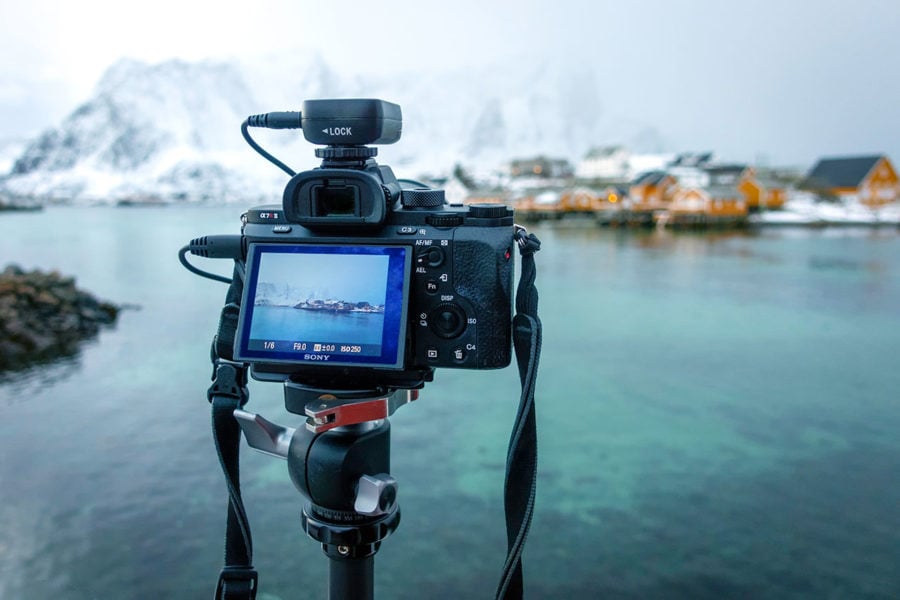
Larger than a point & shoot, but smaller than a DSLR, mirrorless digital cameras are all the rage right now.
Even professional photographers are starting to switch over due to their small size and ability to produce high-quality images. A smaller camera allows you to pack more lens options into your camera backpack.
I use a mirrorless camera as my main travel camera. They offer more features than a point & shoot, like the ability to use interchangeable lenses, and a larger sensor with better low-light capability and detail.
1. Sony A7 III - Best Mirrorless Travel Camera
Weight: 22.93 oz
Zoom: Various Lenses Available
Sensor Size: Full Frame (35.8 x 23.8 mm)
Megapixels: 24
Price: Click Here For Latest Price
The Sony A7 III is the best travel camera money can buy at the moment. Sony has been on the cutting edge the past few years, and other brands are having trouble keeping up. Its sensor technology, focusing speeds, and dynamic range are incredible -- while also being cheaper than competitors.
Sony has additional specialty models too. Sony A7S II is geared towards videographers, with extremely good low-light capabilities. The Sony A7R III (what I use) is for landscape photographers with a whopping 42.4 megapixels.
And the new Sony A7C is an even smaller version of the Sony A7, which might be ideal if you're looking for the smallest Full Frame travel camera option.
Pros
- Full Frame Sensor
- Internal Stabilization
- 4K Video
- High Dynamic Range
- Weather-sealed Body
Cons
- Lacks swivel screen
- No built-in flash
- Expensive
EDITOR'S NOTE: The Sony A7 is a very high-end travel camera. It’s for “professional amateurs”. Meaning, you already know how to shoot in manual mode, understand concepts like depth of field, and are a competent photographer looking to take your craft to the next level.
OFFICIAL SUPPLIERS:
2. Fujifilm X‑T3 - Classic Travel Style
Weight: 17.2 oz
Zoom: Various Lenses Available
Sensor Size: APS-C (23.6 x 15.6 mm)
Megapixels: 26.1
Price: Click Here For Latest Price
The Fuji X-T3 is a popular competitor to the Sony A7 mirrorless camera. I've used it while traveling before, and the Fuji is very well-made! My favorite part about it is the rugged all-metal dials that control this camera's settings.
One downside is the smaller APS-C crop sensor rather than being Full Frame like the Sony A7. Another is less power in low-light situations. The Fuji also has fewer focus points, half the battery capacity, and no internal stabilization.
Pros
- APS-C Sensor
- 4K Video
- Weather-sealed Body
Cons
- Lacks swivel screen
- No built-in flash
- Limited Battery
- No internal stabilization
OFFICIAL SUPPLIERS:
3. Sony A6600 - Best Value For Travel
Weight: 17.7 oz
Zoom: Various Lenses Available
Sensor Size: APS-C (23.5 x 15.6 mm)
Megapixels: 24
Price: Click Here For Latest Price
The Sony A6600 is an even smaller version of Sony's awesome A7 mirrorless camera. The big difference is a slightly smaller APS-C cropped sensor, and less weatherproofing to protect against rain.
The A6600 is also wonderful for travel video with 4K resolution and has a touch-screen, but with less low-light capability. For a more budget-friendly version, the older Sony A6400 is almost just as good, for about $400 hundred dollars less!
Pros
- Very Portable
- Flip Screen for Vlogging!
- Internal stabilization
Cons
- No Built-In Flash
- Cramped Button Layout
EDITOR'S NOTE: I really love the Sony A6600. It includes many features of the higher-end Sony A7 (like internal camera stabilization), but it also has a flip screen so you can see yourself while vlogging. I use it as a backup camera.
OFFICIAL SUPPLIERS:
Best Action Cameras For Travel
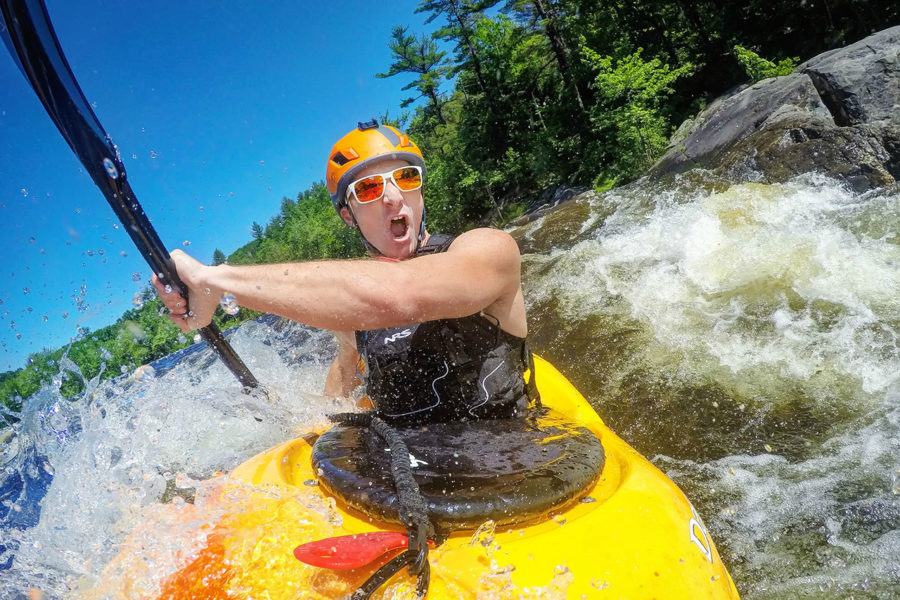
Action cameras have really transformed the travel photography & video world over the years. These tiny, waterproof, indestructible cameras can travel anywhere & record anything!
If you plan on hiking, mountain biking, surfing, kayaking, snorkeling, scuba diving, or even swimming under waterfalls during your trips, an action camera can create epic video & photos of the experience.
1. GoPro Hero 9 - Adventure Travel Camera
Weight: 158 g (5.57 oz)
Sensor Size: ½.3″
Megapixels: 23
Price: Click Here For Latest Price
The GoPro Hero 9 is GoPro's best camera yet, with improved video stabilization, color, and 5K(!) footage. It's waterproof case & touch-screen will handle any activity you dream up. A must-have for adventure addicts like me!
One cool feature of the new GoPro is the 2nd front-facing screen. This solves one of the old problems of not being able to preview selfie style shots. There are also many great GoPro accessories for attaching your camera to anything!
Pros
- 5K Video
- 20 Megapixel Photos
- Ultra Small
- Touch Screen
- Waterproof
Cons
- Small Sensor Size
- Limited Zoom
- Needs Accessories
EDITOR'S NOTE: Perfect compact travel camera for those of us who love adventure sports, especially if you need something small & waterproof, or are worried about breaking big cameras.
OFFICIAL SUPPLIERS:
2. DJI Osmo Action - Budget Action Camera
Weight: 124 g
Sensor Size: ½.3″
Megapixels: 12
Price: Click Here For Latest Price
While GoPro generally controls the adventure travel camera market the DJI Osmo Action is a solid alternative that's significantly cheaper as well. The features are nearly identical, including 4K video at 60 fps, dual screens, and voice control.
The Osmo Action also has digitally stabilized video, much like the GoPro, but offers little beyond basic 4K recording and a 12 MP photography experience. If you don't need the additional features of the GoPro line the Osmo Action is a decent budget alternative.
Pros
- Cheaper than GoPro
- Similar Quality
Cons
- Dimmer LCD Screen
- Basic Image Stabilization
OFFICIAL SUPPLIERS:
Smartphones For Travel Photography
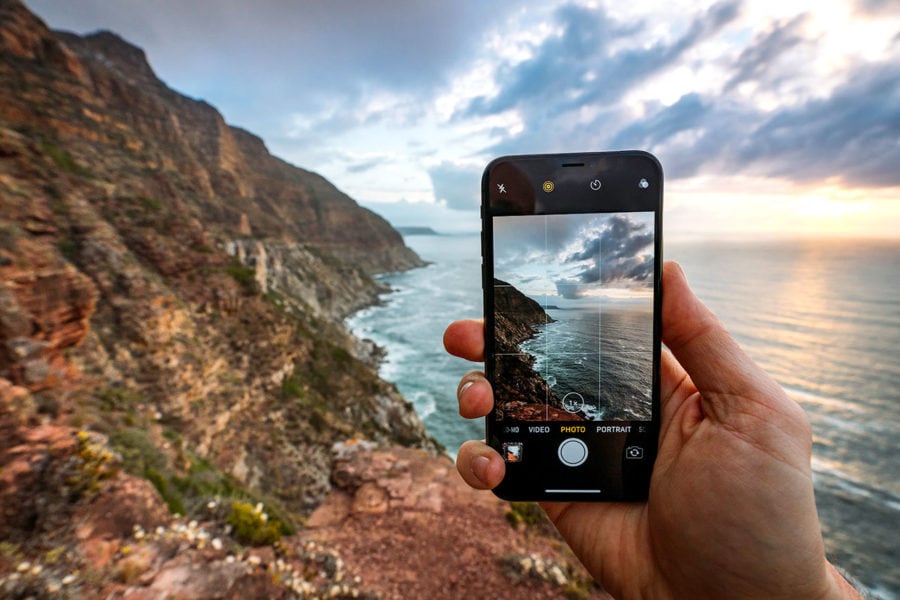
Can you use your smartphone as a travel camera? Of course you can!
You'll sacrifice a bit of quality due to the super small camera sensor in phones, but if you're only publishing images online, most people won't notice.
Some other downsides to smartphone cameras are the lack of a physical zoom (digital zoom looks bad), not many lens options, few manual controls, and of course the battery drain on your phone if you're using it all the time.
Here are some of the best smartphone cameras for traveling...
1. iPhone 16 Pro
Smartphone cameras are continuing to eat into the camera market share and the new iPhone 16 Pro is one of the best on the market. With THREE dedicated lenses built-in: Ultra-Wide 13mm f/1.8, wide 26mm f/1.5, and telephoto 77mm f/2.8 -- you have a variety of viewing angles to choose from.
The out-of-focus areas are surprisingly well rendered; it is amazing given how small smartphone sensors are. You can even adjust the background post-shoot using Depth Control to enhance background bokeh and make your subject stand out. It's a super powerful travel camera in your pocket.
2. Google Pixel 5a
Google's new Pixel 5a has one of the best portrait modes you can find and intelligently sharpens the borders around your subject while allowing for micro-adjustment of the background blur. The low light photography experience is also very good.
Night Sight allows for exposure stacking using multiple images taken in tandem and even non-stacked images properly preserve dark areas and bright highlights without excessive noise. The phone has a powerful 12.2 MP Duel Pixel lens at f/1.7, as well as a 16 MP Ultra Wide lens at f/2.2.Which Travel Cameras Do I Use?
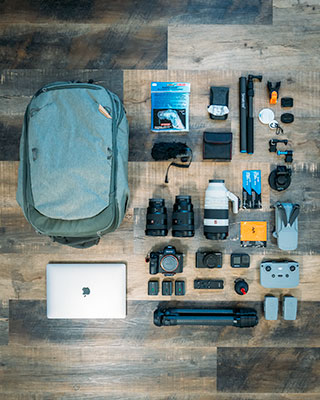
What's In My Camera Bag?
Take a peek inside my camera bag to learn what I pack with me on my travel photography adventures around the world.
How To Improve Your Travel Photography
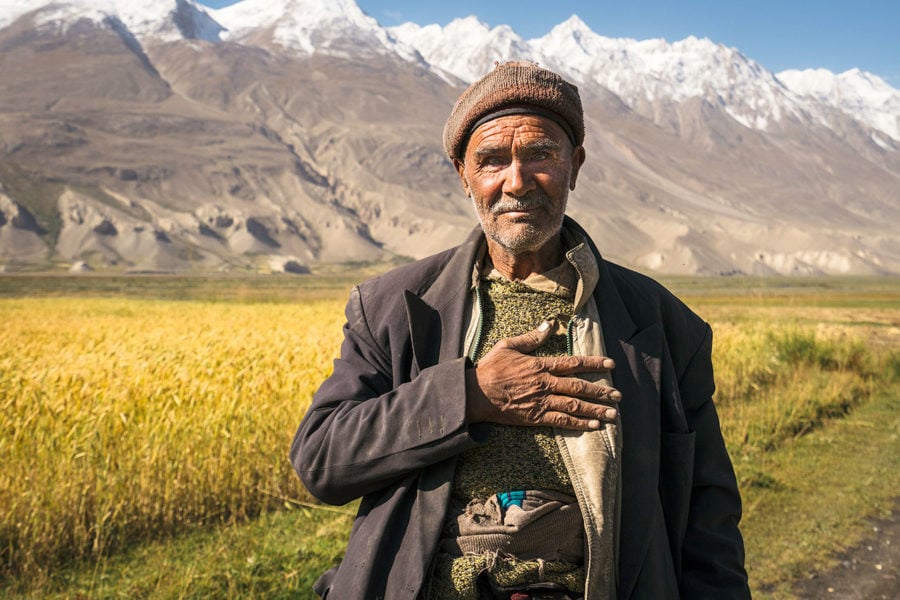
I want to let you in on a little travel photography secret. Even if you have a top-of-the-line $10,000 camera, your photos aren't going to be spectacular if you don't know how to use it.
And I don't mean pressing the shutter -- I mean things like:
- Learning how to shoot in manual mode
- How to expose images properly
- Framing shots for maximum impact
- Paying attention to light & timing
- Location scouting & seeking photogenic situations
- Post-processing your images with software
You don't become a good travel photographer because you have a nice camera. Your photography improves with practice, patience, and learning new skills.
So sure, invest in a new travel camera if you want to, but remember to invest time into learning new photography skills if you really want to create those jealousy-inducing images for your Instagram feed!
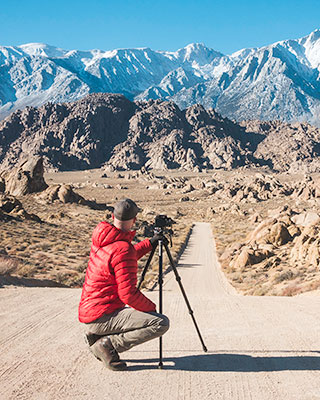
Top Online Photography Courses
Want to improve your photography? Check out my favorite online photography classes & tutorials!
FAQ: Top Travel Camera Questions
Well, I hope you learned a little bit more about the different kind of travel cameras available, and are able to choose one that fits your budget and needs.
Happy travels, and let me know which camera model you decide to pick for your next vacation! ★
READ MORE TRAVEL PHOTOGRAPHY TIPS
I hope you enjoyed my guide to the best travel cameras of 2024! Hopefully you found it useful. Here are a few more photography articles that I recommend you read next:
- The Best GoPro Accessories For Travel
- Choosing A Lightweight Travel Tripod
- My Favorite Gifts For Travelers
- How To Photograph The Northern Lights
- Is Instagram Ruining Travel?

